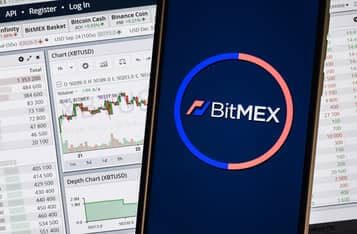Intel Launches Second-Generation Bitcoin Mining Chip ‘Blockscale’
On Monday, Intel, a US multinational semiconductor chip maker corporation headquartered in California, announced that it has launched its second-generation Bitcoin mining chip, commonly known as “Intel Blockscale ASIC,” which will increase the energy efficiency of Proof-of-Work (PoW) mining.

Through the company’s decades of research and development in related areas, Intel said that It has developed and unveiled the new Bitcoin mining chip to provide crypto mining companies with more efficient mining rigs than most models available in the market.
Balaji Kanigicherla, the Vice-President and General Manager of the blockchain unit at Intel, talked about the development and said: “Intel’s decades of R&D in cryptography, hashing techniques and ultra-low voltage circuits make it possible for blockchain applications to scale their computing power without compromising on sustainability.”
The new product launch is important because it will help mining firms win concerns of the environmental, social and governance (ESG). Cryptocurrency mining has long been associated with environmental harm.
Jose Rios, General Manager of Intel’s blockchain group, further stated that: “The Intel Blockscale ASIC (application-specific integrated circuit) is going to play a major role in helping Bitcoin mining companies achieve both sustainability and hashrate scaling objectives in the years ahead.”
According to Intel’s statement, each Blockscale ASIC chip will offer up to 580 gigahashes per second (GH/s) of hash rate with up to 26 joules per terahash (J/TH) of power efficiency and support up to 256 integrated circuits per chain, as well as providing on-chip temperature –and voltage–sensing capabilities.
Blockscale promises to be more energy-efficient than others at SHA-256 hashing, which is most commonly used in Bitcoin mining. That sounds great news for Bitcoin mining firms.
Navigating the Future
Early this year, Intel started investing in blockchain technology with a fresh venture designed to manufacture new chips to mine cryptocurrency. The firm focuses on sustainability and is working on creating the most energy-efficient computing technologies at scale.
In February, Intel revealed its first-generation crypto-focused chip, called “Bonanza Mine”, scheduled to be shipped later this year. Three companies have already preordered the technology, including Block (formerly known as Square), the Jack Dorsey-owned fintech firm, Bitcoin mining company GRIID Infrastructures, and Bitcoin mining firm HIVE Blockchain Technologies Ltd).
With the environmental impact of crypto mining becoming a huge concern, Intel’s first and second generations of its mining chips aim to address these issues.
Image source: Shutterstock
Intel Releases New Bitcoin Miner Hardware Specifications






